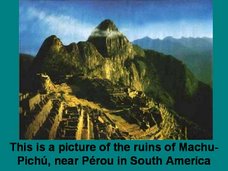Alchemists once thought a key component in creation of the stone was a mythical element named carmot.
Alchemy itself is mostly an original concept and science practiced in the ancient Near East, Egypt, Greece, and India. However, the concept of ensuring youthful health originated in China, while the concept of transmuting one metal into a more precious one (silver or gold) originated from the theories of the 8th century Arab alchemist, Jabir ibn Hayyan. He analysed each Aristotelian element in terms of the four basic qualities of hotness, coldness, dryness, and moistness. Fire was both hot and dry, earth cold and dry, water cold and moist, and air hot and moist. He further theorized that every metal was a combination of these four principles, two of them interior and two exterior.
From this premise, it was reasoned that the transmutation of one metal into another could be effected by the rearrangement of its basic qualities. This change would presumably be mediated by a substance, which came to be called al-iksir in Arabic (from which the Western term "elixir" is derived). It is often considered to exist as a dry red powder (also known as al-Kibrit al-Ahmar الكبريت الأحمر -- red sulphur) made from a legendary stone — the "philosopher's stone".
In the 11th century there was a debate among Muslim chemists on whether the transmutation of substances was possible. A leading opponent was Avicenna, who discredited the theory of transmutation of substances:
"Those of the chemical craft know well that no change can be effected in the different species of substances, though they can produce the appearance of such change."
According to legend, the 13th-century scientist and philosopher Albertus Magnus is said to have discovered the philosopher's stone and passed it to his pupil Thomas Aquinas, shortly before his death circa 1280. Magnus does not confirm he discovered the stone in his writings, but he did record that he witnessed the creation of gold by "transmutation."
The 16th-century Swiss alchemist Philippus Paracelsus believed in the existence of alkahest which he thought to be an undiscovered element from which all other elements (earth, fire, water, air) were simply derivative forms. Paracelsus believed that this element was, in fact, the philosopher's stone.
Jabir's theory was based on the concept that metals like gold and silver could be hidden in alloys and ores, from which they could be recovered by the appropriate chemical treatment. Jabir himself is believed to be the inventor of aqua regia, a mixture of muriatic (hydrochloric) and nitric acids, one of the few substances that can dissolve gold (and which is still often used for gold recovery and purification).
Gold was particularly valued as a metal that would not rust, tarnish, corrode or otherwise grow corrupt. Since the philosopher's stone would turn a corruptible base metal to incorruptible gold, naturally it would similarly transform human beings from mortal (corruptible) to immortal (incorruptible). One of many theories was that gold was a superior form of metal, and that the philosopher's stone was even purer and superior to gold, and if combined with lesser metals would turn them into superior gold as well.
A mystical text published in the 17th century called the Mutus Liber appears to be a symbolic instruction manual for concocting a philosopher's stone. Called the "wordless book", it was a collection of 15 illustrations.

Philosopher's stone as depicted in the first Harry Potter film.















